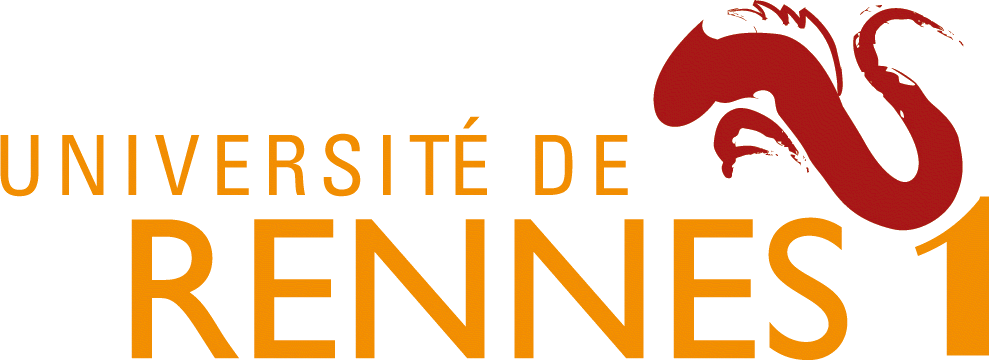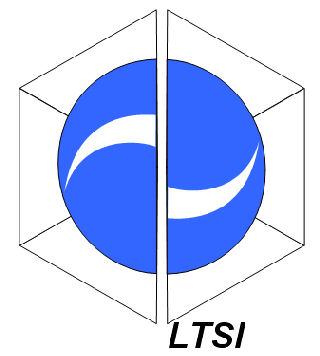News
Members
Publications
Software / Data
Job offers
Images / Videos
Collaborations
Conferences
Lab meetings: "Les partages de midi"
Practical information
Members Area
Next conferences we are in …


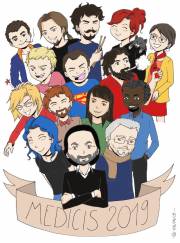
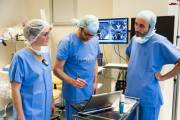
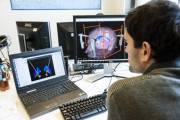
This is an old revision of the document!
Ma page sur le site VisAGeS
Email : Pierre.Hellier@irisa.fr
Adresse : INRIA Rennes
Campus Universitaire de Beaulieu
35042 Rennes cedex - France
Tél : +33 2 99 84 25 23
Fax : +33 2 99 84 71 71
Assistante : Céline Ammoniaux tel : +33 2 99 84 22 52
Recalage rigide, non rigide, validation de méthodes de recalage non-rigide, implémentations efficaces (GPU), echographie 3D en neurochirurgie (calibration spatiale et temporelle , reconstruction , débruitage, recalage)
<bibtex>
@article{Coupe09a,
Abstract = {In image processing, restoration is expected to improve the qualitative inspection of the image and the performance of quantitative image analysis techniques. In this paper, an adaptation of the nonlocal (NL)-means filter is proposed for speckle reduction in ultrasound (US) images. Originally developed for additive white Gaussian noise, we propose to use a Bayesian framework to derive a NL-means filter adapted to a relevant ultrasound noise model. Quantitative results on synthetic data show the performances of the proposed method compared to well-established and state-of-the-art methods. Results on real images demonstrate that the proposed method is able to preserve accurately edges and structural details of the image.},
Author = {Coup{\'e}, P. and Hellier, P. and Kervrann, C. and Barillot, C.},
Date-Added = {2009-04-29 09:50:01 +0200},
Date-Modified = {2009-09-16 09:47:39 +0200},
Journal = {{IEEE Transactions on Image Processing}},
Number = {10},
Pages = {2221-2229},
Title = {NonLocal Means-based Speckle Filtering for Ultrasound Images},
Volume = {18},
Year = {2009}}
@article{Coupe07,
Abstract = {Three-dimensional (3D) freehand ultrasound uses the acquisition of non-parallel B-scans localized in 3D by a tracking system (optic, mechanical or magnetic). Using the positions of the irregularly spaced B-scans, a regular 3D lattice volume can be reconstructed, to which conventional 3D computer vision algorithms (registration and segmentation) can be applied. This paper presents a new 3D reconstruction method which explicitly accounts for the probe trajectory. Experiments were conducted on phantom and intra-operative datasets using various probe motion types and varied slice-to-slice B-scan distances. Results suggest that this technique improves on classical methods at the expense of computational time.},
Address = {University of Rennes I, CNRS, IRISA - UMR 6074, Campus de Beaulieu, F-35042 Rennes, France; INRIA, VisAGeS U746 Unit/Project, IRISA, Campus de Beaulieu, F-35042 Rennes, France; INSERM, VisAGeS U746 Unit/Project, IRISA, Campus de Beaulieu, F-35042 Rennes, France.},
Author = {Coup{\'e}, P. and Hellier, P and Morandi, X and Barillot, C},
Da = {20070712},
Date-Added = {2007-07-17 14:19:26 +0200},
Date-Modified = {2008-09-04 11:04:06 +0200},
Dep = {20070602},
Doi = {10.1016/j.media.2007.05.002},
Edat = {2007/07/13 09:00},
Issn = {1361-8415 (Print)},
Jid = {9713490},
Journal = {Medical Image Analysis},
Language = {ENG},
Mhda = {2007/07/13 09:00},
Number = {6},
Own = {NLM},
Pages = {604-615},
Phst = {2006/09/11 {$[$}received{$]$}; 2007/05/14 {$[$}revised{$]$}; 2007/05/16 {$[$}accepted{$]$}},
Pii = {S1361-8415(07)00055-2},
Pmid = {17625950},
Pst = {aheadofprint},
Pt = {JOURNAL ARTICLE},
Pubm = {Print-Electronic},
So = {Med Image Anal. 2007 Jun 2;.},
Stat = {Publisher},
Title = {Probe trajectory interpolation for 3D reconstruction of freehand ultrasound.},
Volume = {11},
Year = {2007},
Bdsk-Url-1 = {http://dx.doi.org/10.1016/j.media.2007.05.002}}
@article{Cuzol07,
Abstract = {In this paper we propose a new motion estimator for image sequences depicting fluid
flows. The proposed estimator is based on the Helmholtz decomposition of vector fields. This decomposition consists in representing the velocity field as a sum of a divergence free component and a vorticity free component. The objective is to provide a low-dimensional parametric representation of optical flows by depicting them as deformations generated by a reduced number of vortex and source particles. Both components are approximated using a discretization of the vorticity and divergence maps through regularized Dirac measures. The resulting so called irrotational and solenoidal fields consist of linear combinations of basis functions obtained through a convolution product of the Green kernel gradient and the vorticity map or the divergence map respectively. The coefficient values and the basis function parameters are obtained by minimization of a functional relying on an integrated version of mass conservation principle of fluid mechanics. Results are provided on synthet- ic examples and real world sequences. },
Author = {Cuzol, A. and Hellier, P. and M{\'e}min, E.},
Date-Added = {2006-11-28 08:51:17 -0500},
Date-Modified = {2007-09-11 09:56:25 +0200},
Journal = {International journal of computer vision},
Keywords = {registration, visages},
Number = {3},
Pages = {329-350},
Title = {A low dimensional fluid motion estimator},
Volume = {75},
Year = {2006}}
@article{Coupe08b,
Abstract = {A critical issue in image restoration is the problem of noise removal while keeping the integrity of relevant image information. Denoising is a crucial step to increase image quality and to improve the performance of all the tasks needed for quantitative imaging analysis. The method proposed in this paper is based on a 3-D optimized blockwise version of the nonlocal (NL)-means filter (Buades et al., 2005). The NL-means filter uses the redundancy of information in the image under study to remove the noise. The performance of the NL-means filter has been already demonstrated for 2-D images, but reducing the computational burden is a critical aspect to extend the method to 3-D images. To overcome this problem, we propose improvements to reduce the computational complexity. These different improvements allow to drastically divide the computational time while preserving the performances of the NL-means filter. A fully automated and optimized version of the NL-means filter is then presented. Our contributions to the NL-means filter are: 1) an automatic tuning of the smoothing parameter; 2) a selection of the most relevant voxels; 3) a blockwise implementation; and 4) a parallelized computation. Quantitative validation was carried out on synthetic datasets generated with BrainWeb (Collins et al., 1998). The results show that our optimized NL-means filter outperforms the classical implementation of the NL-means filter, as well as two other classical denoising methods [anisotropic diffusion (Perona and Malik, 1990)] and total variation minimization process (Rudin et al., 1992) in terms of accuracy (measured by the peak signal-to-noise ratio) with low computation time. Finally, qualitative results on real data are presented},
Author = {Coup{\'e}, P. and Yger, P. and Prima, S. and Hellier, P. and Kervrann, C. and Barillot, C.},
Date-Added = {2008-06-14 17:12:13 +0200},
Date-Modified = {2008-06-14 17:12:32 +0200},
Journal = {IEEE Transactions on Medical Imaging},
Month = {April},
Number = {4},
Pages = {425--441},
Title = {{An Optimized Blockwise Non Local Means Denoising Filter for 3D Magnetic Resonance Images}},
Volume = {27},
Year = {2008}}
@article{Rousseau05,
Abstract = {This paper describes a new robust and fully automatic method for calibration of three-dimensional (3D) freehand ultrasound called Confhusius (CalibratiON for FreeHand UltraSound Imaging USage). 3D Freehand ultrasound consists in mounting a position sensor on a standard probe. The echographic B-scans can be localized in 3D and compounded into a volume. However, especially for quantitative use, this process dramatically requires a calibration procedure that determines its accuracy and usefulness. Calibration aims at determining the transformation (translations, rotations, scaling) between the coordinates system of the echographic images and the coordinate system of the localization system. To calibrate, we acquire images of a phantom whose 3D geometrical properties are known. We propose a robust and fully automatic calibration method based on the Hough transform and robust estimators. Experiments have been done with synthetic and real sequences, and this calibration method is shown to be easy to perform, accurate, automatic and fast enough for clinical use.},
Address = {IRISA, Universite Rennes 1-INRIA-CNRS, Campus de Beaulieu, 35042 Rennes cedex, France. froussea@irisa.fr},
Au = {Rousseau, F and Hellier, P and Barillot, C},
Author = {Rousseau, Francois and Hellier, Pierre and Barillot, Christian},
Da = {20041207},
Date-Added = {2007-07-17 14:19:26 +0200},
Date-Modified = {2007-07-17 14:23:57 +0200},
Dcom = {20050415},
Doi = {10.1016/j.media.2004.06.021},
Edat = {2004/12/08 09:00},
Issn = {1361-8415 (Print)},
Jid = {9713490},
Journal = {Med Image Anal},
Jt = {Medical image analysis},
Keywords = {calibration, ultrasound, visages},
Language = {eng},
Lr = {20050607},
Mhda = {2005/04/16 09:00},
Number = {1},
Own = {NLM},
Pages = {25--38},
Phst = {2003/07/10 {$[$}received{$]$}; 2004/04/21 {$[$}revised{$]$}; 2004/06/09 {$[$}accepted{$]$}},
Pii = {S1361-8415(04)00040-4},
Pl = {England},
Pmid = {15581810},
Pst = {ppublish},
Pt = {Journal Article},
Pubm = {Print},
Sb = {IM},
So = {Med Image Anal. 2005 Feb;9(1):25-38.},
Stat = {MEDLINE},
Title = {Confhusius: a robust and fully automatic calibration method for 3D freehand ultrasound.},
Volume = {9},
Year = {2005},
Bdsk-Url-1 = {http://dx.doi.org/10.1016/j.media.2004.06.021}}
@article{Hellier03a,
Abstract = {In this paper, we investigate the introduction of cortical constraints for non rigid intersubject brain registration. We extract sulcal patterns with the active ribbon method, presented by Le Goualher et al. (1997). An energy based registration method (Hellier et al., 2001), which will be called photometric registration method in this paper, makes it possible to incorporate the matching of cortical sulci. The local sparse similarity and the photometric similarity are, thus, expressed in a unified framework. We show the benefits of cortical constraints on a database of 18 subjects, with global and local assessment of the registration. This new registration scheme has also been evaluated on functional magnetoencephalography data. We show that the anatomically constrained registration leads to a substantial reduction of the intersubject functional variability.},
Address = {IRISA/INRIA-CNRS Rennes, Vista Project, Campus de Beaulieu, 35042 Rennes, France. phellier@irisa.fr},
Au = {Hellier, P and Barillot, C},
Author = {Hellier, Pierre and Barillot, Christian},
Da = {20030428},
Date-Added = {2007-07-17 14:19:26 +0200},
Date-Modified = {2009-10-27 18:36:57 +0100},
Dcom = {20030815},
Edat = {2003/04/29 05:00},
Issn = {0278-0062 (Print)},
Jid = {8310780},
Journal = {IEEE Trans Med Imaging},
Jt = {IEEE transactions on medical imaging},
Keywords = {registration, visages},
Language = {eng},
Lr = {20061115},
Mhda = {2003/08/16 05:00},
Number = {2},
Own = {NLM},
Pages = {217--227},
Pl = {United States},
Pmid = {12715998},
Pst = {ppublish},
Pt = {Comparative Study; Journal Article; Research Support, Non-U.S. Gov't},
Pubm = {Print},
Sb = {IM},
So = {IEEE Trans Med Imaging. 2003 Feb;22(2):217-27.},
Stat = {MEDLINE},
Title = {Coupling dense and landmark-based approaches for nonrigid registration.},
Volume = {22},
Year = {2003}}
@article{Klein09,
Abstract = {All fields of neuroscience that employ brain imaging need to communicate their results with reference to anatomical regions. In particular, comparative morphometry and group analysis of functional and physiological data require coregistration of brains to establish correspondences across brain structures. It is well established that linear registration of one brain to another is inadequate for aligning brain structures, so numerous algorithms have emerged to nonlinearly register brains to one another. This study is the largest evaluation of nonlinear deformation algorithms applied to brain image registration ever conducted. Fourteen algorithms from laboratories around the world are evaluated using 8 different error measures. More than 45,000 registrations between 80 manually labeled brains were performed by algorithms including: AIR, ANIMAL, ART, Diffeomorphic Demons, FNIRT, IRTK, JRD-fluid, ROMEO, SICLE, SyN, and four different SPM5 algorithms ("SPM2-type" and regular Normalization, Unified Segmentation, and the DARTEL Toolbox). All of these registrations were preceded by linear registration between the same image pairs using FLIRT. One of the most significant findings of this study is that the relative performances of the registration methods under comparison appear to be little affected by the choice of subject population, labeling protocol, and type of overlap measure. This is important because it suggests that the findings are generalizable to new subject populations that are labeled or evaluated using different labeling protocols. Furthermore, we ranked the 14 methods according to three completely independent analyses (permutation tests, one-way ANOVA tests, and indifference-zone ranking) and derived three almost identical top rankings of the methods. ART, SyN, IRTK, and SPM's DARTEL Toolbox gave the best results according to overlap and distance measures, with ART and SyN delivering the most consistently high accuracy across subjects and label sets. Updates will be published on the http://www.mindboggle.info/papers/ website.},
Author = {Klein, A. and Andersson, J. and Ardekani, B.A. and Ashburner, J. and Avants, B. and Chiang, M. and Christensen, G.E. and Collins, D. L. and Gee, J. and Hellier, P. and Song, J. and Jenkinson, M. and Lepage, C. and Rueckert, D. and Thompson, P. and Vercauteren, T. and Woods, R.P. and Mann, J. J. and Parsey, R.V.},
Date-Added = {2009-04-01 14:33:30 +0200},
Date-Modified = {2009-06-05 16:02:13 +0200},
Journal = {NeuroImage},
M3 = {doi: DOI: 10.1016/j.neuroimage.2008.12.037},
Number = {3},
Pages = {786-802},
Title = {Evaluation of 14 nonlinear deformation algorithms applied to human brain MRI registration},
Url = {http://www.sciencedirect.com/science/article/B6WNP-4VC7DX1-1/2/8d9dffe89b9981c86fcebf256c21cd04},
Volume = {46},
Year = {2009},
Bdsk-Url-1 = {http://www.sciencedirect.com/science/article/B6WNP-4VC7DX1-1/2/8d9dffe89b9981c86fcebf256c21cd04}}
@article{Hellier01a,
Author = {Hellier, P. and Barillot, C. and M{\'e}min, E. and P{\'e}rez, P.},
Date-Added = {2006-12-15 03:40:25 -0500},
Date-Modified = {2006-12-15 03:41:30 -0500},
Journal = {IEEE Transactions on Medical Imaging},
Keywords = {registration, visages},
Local-Url = {file://localhost/Users/phellier/UDD/Latex/Reprint/TMI_Romeo.pdf},
Month = {May},
Number = {5},
Pages = {388--402},
Title = {{Hierarchical estimation of a dense deformation field for 3D robust registration}},
Volume = {20},
Year = {2001},
Bdsk-File-1 = {YnBsaXN0MDDUAQIDBAUIJidUJHRvcFgkb2JqZWN0c1gkdmVyc2lvblkkYXJjaGl2ZXLRBgdUcm9vdIABqAkKFRYXGyIjVSRudWxs0wsMDQ4RFFpOUy5vYmplY3RzV05TLmtleXNWJGNsYXNzog8QgASABqISE4ACgAOAB1lhbGlhc0RhdGFccmVsYXRpdmVQYXRo0hgNGRpXTlMuZGF0YU8RAZIAAAAAAZIAAgAADE1hY2ludG9zaCBIRAAAAAAAAAAAAAAAAAAAAMSsfnxIKwAAABAmMw1UTUlfUm9tZW8ucGRmAAAAAAAAAAAAAAAAAAAAAAAAAAAAAAAAAAAAAAAAAAAAAAAAAAAAAAAAAAAAAAAAAAAAECY/wE4MOgAAAAAAAAAAAAEAAgAACSAAAAAAAAAAAAAAAAAAAAAHUmVwcmludAAAEAAIAADErGJcAAAAEQAIAADATfAaAAAAAQAUABAmMwAQGSsADwuQAAn6WAAAe1sAAgA7TWFjaW50b3NoIEhEOlVzZXJzOnBoZWxsaWVyOlVERDpMYXRleDpSZXByaW50OlRNSV9Sb21lby5wZGYAAA4AHAANAFQATQBJAF8AUgBvAG0AZQBvAC4AcABkAGYADwAaAAwATQBhAGMAaQBuAHQAbwBzAGgAIABIAEQAEgAuVXNlcnMvcGhlbGxpZXIvVUREL0xhdGV4L1JlcHJpbnQvVE1JX1JvbWVvLnBkZgATAAEvAAAVAAIAD///AACABdIcHR4fWCRjbGFzc2VzWiRjbGFzc25hbWWjHyAhXU5TTXV0YWJsZURhdGFWTlNEYXRhWE5TT2JqZWN0XxAYLi4vUmVwcmludC9UTUlfUm9tZW8ucGRm0hwdJCWiJSFcTlNEaWN0aW9uYXJ5EgABhqBfEA9OU0tleWVkQXJjaGl2ZXIACAARABYAHwAoADIANQA6ADwARQBLAFIAXQBlAGwAbwBxAHMAdgB4AHoAfACGAJMAmACgAjYCOAI9AkYCUQJVAmMCagJzAo4CkwKWAqMCqAAAAAAAAAIBAAAAAAAAACgAAAAAAAAAAAAAAAAAAAK6}}
@article{Coupe09a,
Abstract = {In image processing, restoration is expected to improve the qualitative inspection of the image and the performance of quantitative image analysis techniques. In this paper, an adaptation of the nonlocal (NL)-means filter is proposed for speckle reduction in ultrasound (US) images. Originally developed for additive white Gaussian noise, we propose to use a Bayesian framework to derive a NL-means filter adapted to a relevant ultrasound noise model. Quantitative results on synthetic data show the performances of the proposed method compared to well-established and state-of-the-art methods. Results on real images demonstrate that the proposed method is able to preserve accurately edges and structural details of the image.},
Author = {Coup{\'e}, P. and Hellier, P. and Kervrann, C. and Barillot, C.},
Date-Added = {2009-04-29 09:50:01 +0200},
Date-Modified = {2009-09-16 09:47:39 +0200},
Journal = {{IEEE Transactions on Image Processing}},
Number = {10},
Pages = {2221-2229},
Title = {NonLocal Means-based Speckle Filtering for Ultrasound Images},
Volume = {18},
Year = {2009}}
@article{Rousseau06a,
Author = {Rousseau, F. and Hellier, P. and Letteboer, M. and Niessen, W. and Barillot, C.},
Date-Added = {2006-08-13 11:01:56 -0400},
Date-Modified = {2006-11-23 11:26:55 -0500},
Journal = {IEEE Transactions on Medical Imaging},
Keywords = {3D freehand, validation, visages},
Local-Url = {file://localhost/Users/phellier/UDD/Latex/Reprint/TMI_CalibrationEvaluation.pdf},
Month = {Novembre},
Number = {11},
Pages = {1492--1501},
Title = {Quantitative Evaluation of Three Calibration Methods for 3D Freehand Ultrasound},
Url = {http://dx.doi.org/10.1109/TMI.2006.882134},
Volume = {25},
Year = {2006},
Bdsk-File-1 = {YnBsaXN0MDDUAQIDBAUIJidUJHRvcFgkb2JqZWN0c1gkdmVyc2lvblkkYXJjaGl2ZXLRBgdUcm9vdIABqAkKFRYXGyIjVSRudWxs0wsMDQ4RFFpOUy5vYmplY3RzV05TLmtleXNWJGNsYXNzog8QgASABqISE4ACgAOAB1lhbGlhc0RhdGFccmVsYXRpdmVQYXRo0hgNGRpXTlMuZGF0YU8RAdIAAAAAAdIAAgAADE1hY2ludG9zaCBIRAAAAAAAAAAAAAAAAAAAAMSsfnxIKwAAABAmMx1UTUlfQ2FsaWJyYXRpb25FdmFsdWF0aW9uLnBkZgAAAAAAAAAAAAAAAAAAAAAAAAAAAAAAAAAAAAAAAAAAAAAAECY7wYuJwFBERiBDQVJPAAEAAgAACSAAAAAAAAAAAAAAAAAAAAAHUmVwcmludAAAEAAIAADErGJcAAAAEQAIAADBi3uwAAAAAQAUABAmMwAQGSsADwuQAAn6WAAAe1sAAgBLTWFjaW50b3NoIEhEOlVzZXJzOnBoZWxsaWVyOlVERDpMYXRleDpSZXByaW50OlRNSV9DYWxpYnJhdGlvbkV2YWx1YXRpb24ucGRmAAAOADwAHQBUAE0ASQBfAEMAYQBsAGkAYgByAGEAdABpAG8AbgBFAHYAYQBsAHUAYQB0AGkAbwBuAC4AcABkAGYADwAaAAwATQBhAGMAaQBuAHQAbwBzAGgAIABIAEQAEgA+VXNlcnMvcGhlbGxpZXIvVUREL0xhdGV4L1JlcHJpbnQvVE1JX0NhbGlicmF0aW9uRXZhbHVhdGlvbi5wZGYAEwABLwAAFQACAA///wAAgAXSHB0eH1gkY2xhc3Nlc1okY2xhc3NuYW1lox8gIV1OU011dGFibGVEYXRhVk5TRGF0YVhOU09iamVjdF8QKC4uL1JlcHJpbnQvVE1JX0NhbGlicmF0aW9uRXZhbHVhdGlvbi5wZGbSHB0kJaIlIVxOU0RpY3Rpb25hcnkSAAGGoF8QD05TS2V5ZWRBcmNoaXZlcgAIABEAFgAfACgAMgA1ADoAPABFAEsAUgBdAGUAbABvAHEAcwB2AHgAegB8AIYAkwCYAKACdgJ4An0ChgKRApUCowKqArMC3gLjAuYC8wL4AAAAAAAAAgEAAAAAAAAAKAAAAAAAAAAAAAAAAAAAAwo=},
Bdsk-Url-1 = {http://dx.doi.org/10.1109/TMI.2006.882134}}
@article{Hellier03,
Abstract = {Although numerous methods to register brains of different individuals have been proposed, no work has been done, as far as we know, to evaluate and objectively compare the performances of different nonrigid (or elastic) registration methods on the same database of subjects. In this paper, we propose an evaluation framework, based on global and local measures of the relevance of the registration. We have chosen to focus more particularly on the matching of cortical areas, since intersubject registration methods are dedicated to anatomical and functional normalization, and also because other groups have shown the relevance of such registration methods for deep brain structures. Experiments were conducted using 6 methods on a database of 18 subjects. The global measures used show that the quality of the registration is directly related to the transformation's degrees of freedom. More surprisingly, local measures based on the matching of cortical sulci did not show significant differences between rigid and non rigid methods.},
Address = {Projet Vista. IRISA/INRIA-CNRS Rennes, France. pierre.hellier{\char64}irisa.fr},
Au = {Hellier, P and Barillot, C and Corouge, I and Gibaud, B and Le Goualher, G and Collins, DL and Evans, A and Malandain, G and Ayache, N and Christensen, GE and Johnson, HJ},
Author = {Hellier, P and Barillot, C and Corouge, I and Gibaud, B and Le Goualher, G and Collins, D L and Evans, A and Malandain, G and Ayache, N and Christensen, G E and Johnson, H J},
Da = {20030905},
Date-Added = {2007-07-17 14:19:26 +0200},
Date-Modified = {2007-07-17 14:22:45 +0200},
Dcom = {20040129},
Edat = {2003/09/06 05:00},
Gr = {CA75371/CA/NCI; DC03590/DC/NIDCD; NS35368/NS/NINDS},
Issn = {0278-0062 (Print)},
Jid = {8310780},
Journal = {IEEE Trans Med Imaging},
Jt = {IEEE transactions on medical imaging},
Keywords = {registration, validation, visages},
Language = {eng},
Lr = {20061115},
Mhda = {2004/01/30 05:00},
Number = {9},
Own = {NLM},
Pages = {1120--1130},
Pl = {United States},
Pmid = {12956267},
Pst = {ppublish},
Pt = {Comparative Study; Evaluation Studies; Journal Article; Research Support, Non-U.S. Gov't; Research Support, U.S. Gov't, P.H.S.; Validation Studies},
Pubm = {Print},
Sb = {IM},
So = {IEEE Trans Med Imaging. 2003 Sep;22(9):1120-30.},
Stat = {MEDLINE},
Title = {Retrospective evaluation of intersubject brain registration.},
Volume = {22},
Year = {2003}}
</bibtex>

